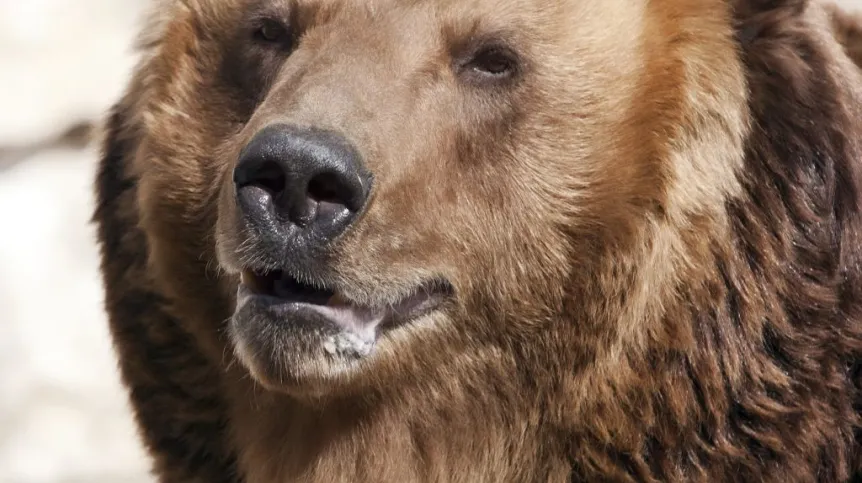
More than 90 percent Polish bears live in Podkarpacie and their population in the region is systematically growing. Bears that live there still follow their primal instincts; they avoid people, but they like to walk along forest tracks.
"In the last 40 years the number of bears in Podkarpackie increased at least sixfold. For many years we are been recording steady growth of their population" - told PAP spokesman for the Regional Directorate of State Forests in Krosno, Edward Marszałek.
He reminded that in the early 1970s there were only 20 bears, and they were found only in the Bieszczady Mountains. A quarter of a century later, there were already 50, and ten years ago - 100. "Currently, in the south-eastern Poland, mainly in the Bieszczady Mountains, Beskid Niski and the Przemyśl foothills there are about 180 of these predators; this is approx. 90 percent of the Polish population" - emphasised the spokesman.
In his opinion, "the high number of animals, including bears, is a proof of a good condition of Subcarpathian forests" that are "one of the most important national wildlife refuges".
"Currently nowhere outside of Podkarpacie there is such a complete range of large carnivores, including bears, wolves and lynx, as well as the largest herbivores, including bison, elk and deer" - said Marszałek.
He noted that the forests Podkarpacie are home, among others, to nearly half thousand wolves, 260 lynxes, 160 wildcats and more than 330 bison.
"Among the Subcarpathian bears the synanthropisation phenomenon does not occur, or loss of instinctive fear and tendency to stay close to people, mainly in order to easily get food. Such cases occur, for example, among bears in Tatra" - said the spokesman.
He stressed, however, that for several years the Subcarpathian bears have been seen in places where the food for deer is left. "Sometimes they also like to walk along forest roads" - he noted.
Signs warning about these predators have been set in the area of Solina Lake and the forestry districts Stuposiany and Komańcza.
Bears are omnivores; adults weigh approx. 300 kg, they live to 50 years. They are among the most dangerous predators in Europe.
PAP - Science and Scholarship in Poland
kyc/ par/ mrt/
tr. RL













